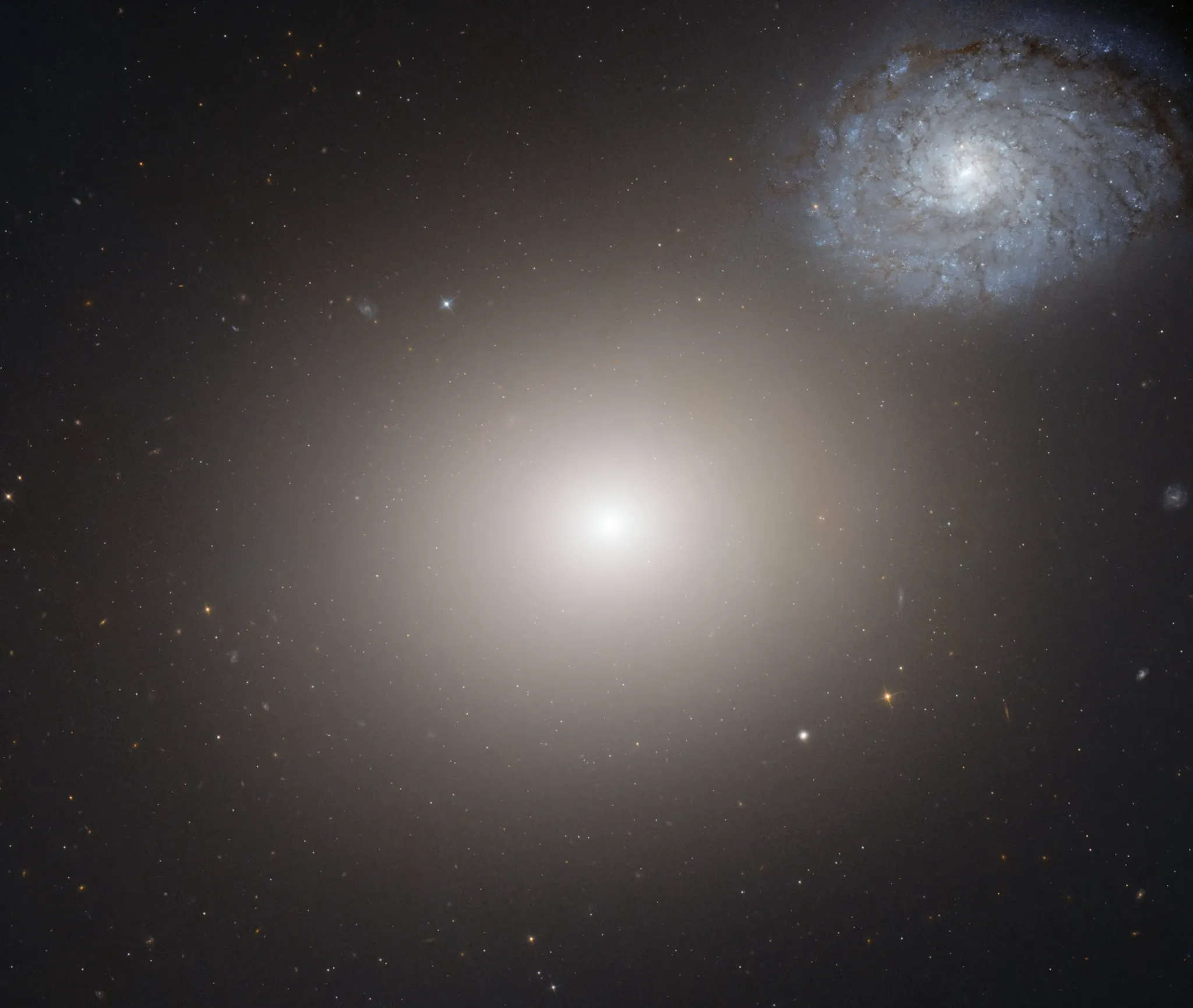M60 | NGC 4649 | Elliptical Galaxy | Virgo | 6,500 Light Years Away
Messier 60 is an elliptical galaxy located in the Virgo Cluster, first observed by Charles Messier in 1779. Positioned approximately 55 million light-years away from Earth, this galaxy is part of the larger Virgo Cluster, a rich gathering of galaxies. With a relatively smooth and featureless appearance, Messier 60 lacks the prominent spiral arms seen in spiral galaxies, and its structure suggests that it has undergone substantial evolution over cosmic time.
Spanning a diameter of about 120,000 light-years, Messier 60 contains a massive population of stars, predominantly older and cooler than those in spiral galaxies. Elliptical galaxies like Messier 60 are characterized by their ellipsoidal shapes, with stars orbiting in a more random and less organized manner compared to the well-defined spiral arms seen in other galaxy types. The study of elliptical galaxies contributes to our understanding of the various morphologies and evolutionary paths that galaxies take within the complex cosmic web.
Messier 60, as part of the Virgo Cluster, serves as a valuable object for astronomers investigating the dynamics and interactions within galaxy clusters. Understanding the behavior of galaxies within clusters helps unravel the larger-scale structure of the universe and provides insights into the formation and evolution of cosmic structures. Messier 60, with its elliptical form and membership in the Virgo Cluster, adds to the ongoing exploration of galactic evolution and the interconnected nature of galaxies within dense cosmic environments.

